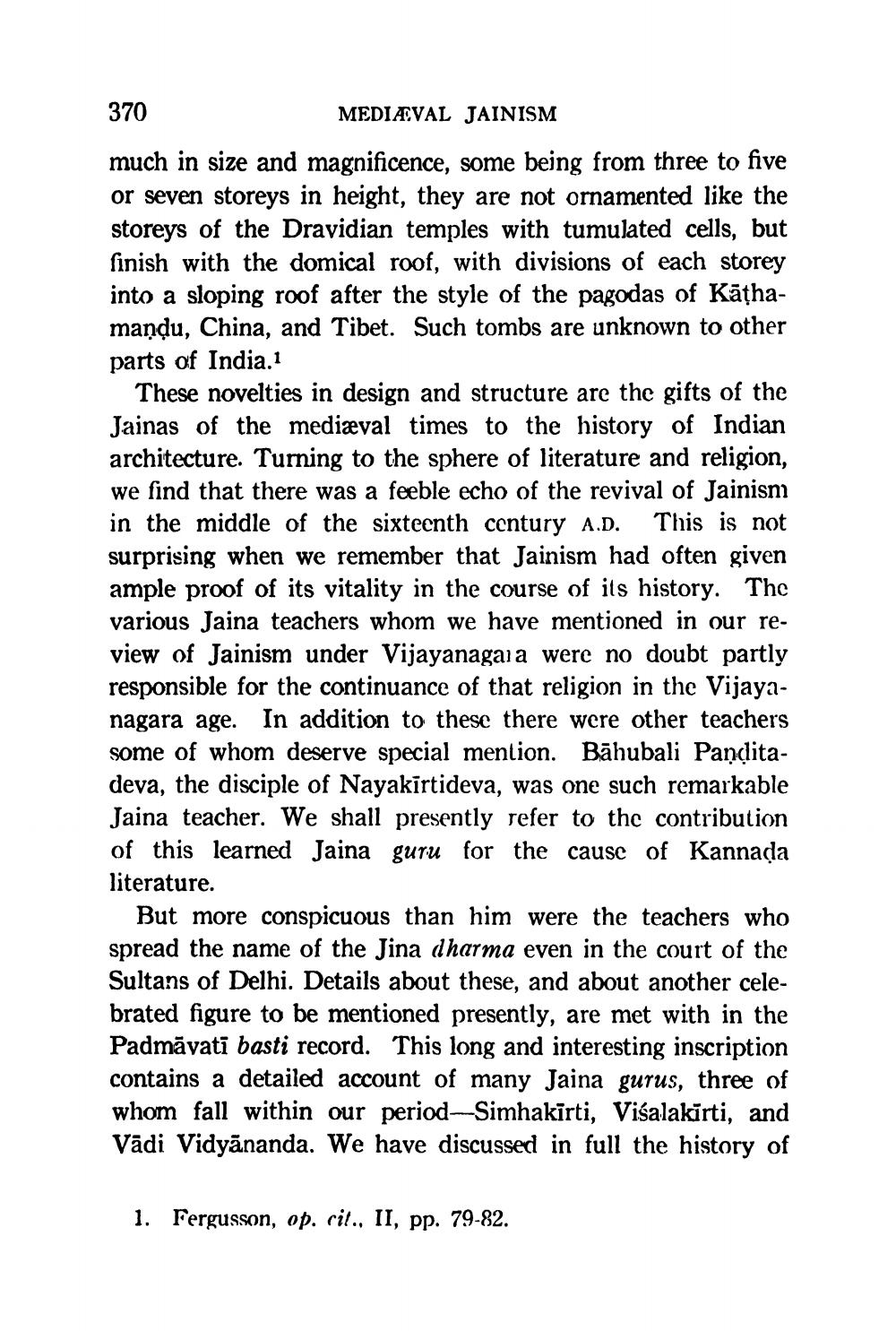________________
370
MEDIÆVAL JAINISM much in size and magnificence, some being from three to five or seven storeys in height, they are not ornamented like the storeys of the Dravidian temples with tumulated cells, but finish with the domical roof, with divisions of each storey into a sloping roof after the style of the pagodas of Kāthamaņqu, China, and Tibet. Such tombs are unknown to other parts of India. 1
These novelties in design and structure are the gifts of the Jainas of the mediæval times to the history of Indian architecture. Turning to the sphere of literature and religion, we find that there was a feeble echo of the revival of Jainism in the middle of the sixteenth century A.D. This is not surprising when we remember that Jainism had often given ample proof of its vitality in the course of its history. The various Jaina teachers whom we have mentioned in our review of Jainism under Vijayanagaia were no doubt partly responsible for the continuance of that religion in the Vijayanagara age. In addition to these there were other teachers some of whom deserve special mention. Bāhubali Panditadeva, the disciple of Nayakīrtideva, was one such remarkable Jaina teacher. We shall presently refer to the contribution of this learned Jaina guru for the cause of Kannada literature.
But more conspicuous than him were the teachers who spread the name of the Jina dharma even in the court of the Sultans of Delhi. Details about these, and about another celebrated figure to be mentioned presently, are met with in the Padmāyatī basti record. This long and interesting inscription contains a detailed account of many Jaina gurus, three of whom fall within our period-Simhakirti, Visalakīrti, and Vādi Vidyānanda. We have discussed in full the history of
1. Fergusson, op. cit., II, pp. 79-82.




